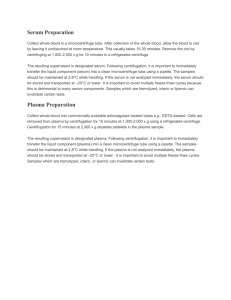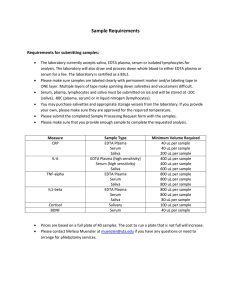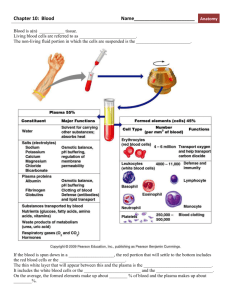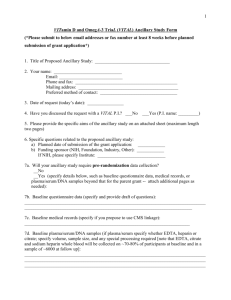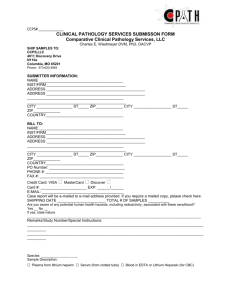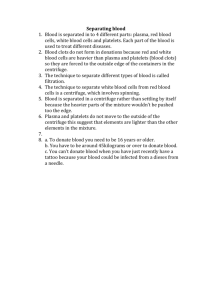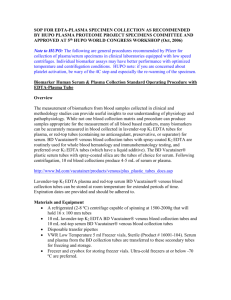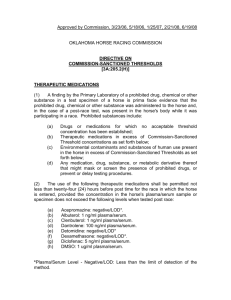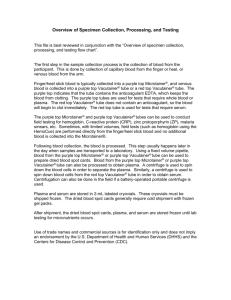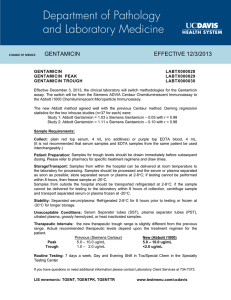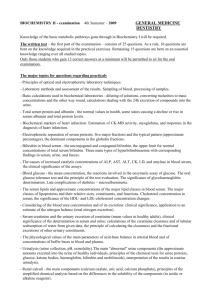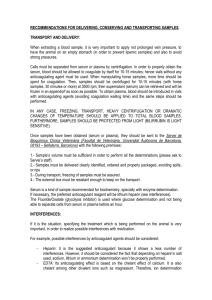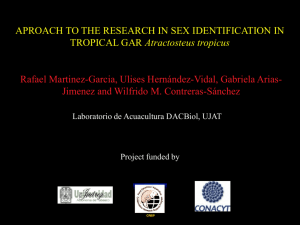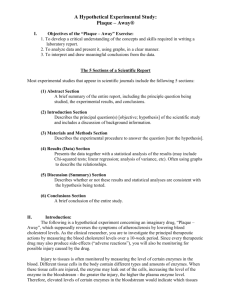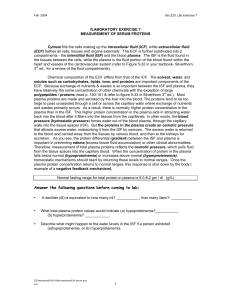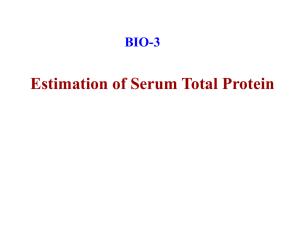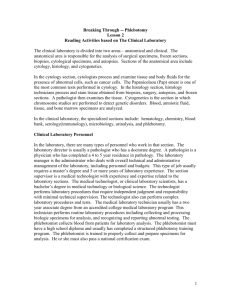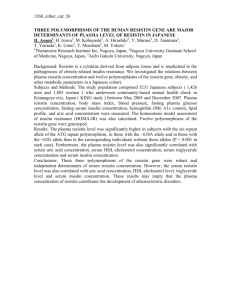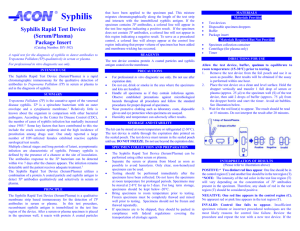Serum and plasma
advertisement
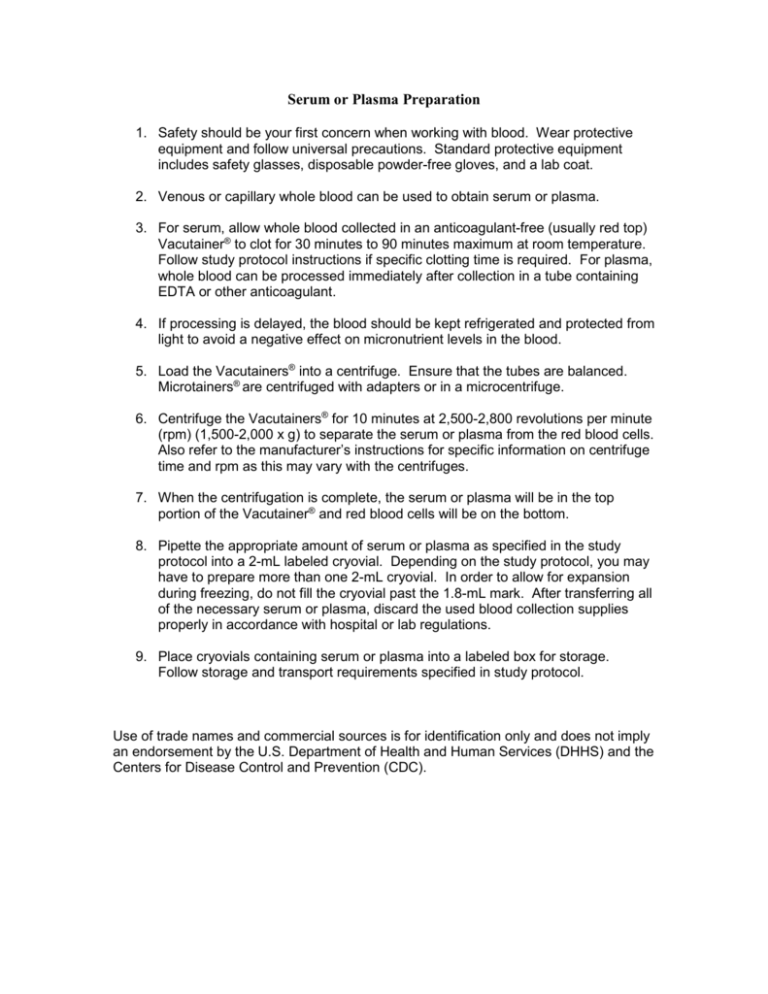
Serum or Plasma Preparation 1. Safety should be your first concern when working with blood. Wear protective equipment and follow universal precautions. Standard protective equipment includes safety glasses, disposable powder-free gloves, and a lab coat. 2. Venous or capillary whole blood can be used to obtain serum or plasma. 3. For serum, allow whole blood collected in an anticoagulant-free (usually red top) Vacutainer® to clot for 30 minutes to 90 minutes maximum at room temperature. Follow study protocol instructions if specific clotting time is required. For plasma, whole blood can be processed immediately after collection in a tube containing EDTA or other anticoagulant. 4. If processing is delayed, the blood should be kept refrigerated and protected from light to avoid a negative effect on micronutrient levels in the blood. 5. Load the Vacutainers® into a centrifuge. Ensure that the tubes are balanced. Microtainers® are centrifuged with adapters or in a microcentrifuge. 6. Centrifuge the Vacutainers® for 10 minutes at 2,500-2,800 revolutions per minute (rpm) (1,500-2,000 x g) to separate the serum or plasma from the red blood cells. Also refer to the manufacturer’s instructions for specific information on centrifuge time and rpm as this may vary with the centrifuges. 7. When the centrifugation is complete, the serum or plasma will be in the top portion of the Vacutainer® and red blood cells will be on the bottom. 8. Pipette the appropriate amount of serum or plasma as specified in the study protocol into a 2-mL labeled cryovial. Depending on the study protocol, you may have to prepare more than one 2-mL cryovial. In order to allow for expansion during freezing, do not fill the cryovial past the 1.8-mL mark. After transferring all of the necessary serum or plasma, discard the used blood collection supplies properly in accordance with hospital or lab regulations. 9. Place cryovials containing serum or plasma into a labeled box for storage. Follow storage and transport requirements specified in study protocol. Use of trade names and commercial sources is for identification only and does not imply an endorsement by the U.S. Department of Health and Human Services (DHHS) and the Centers for Disease Control and Prevention (CDC).
